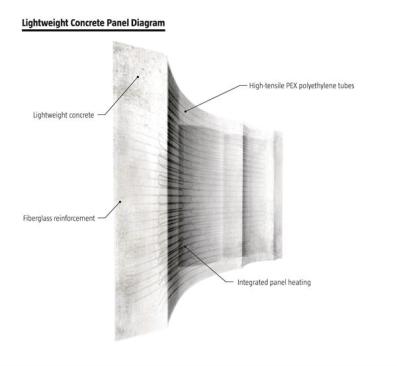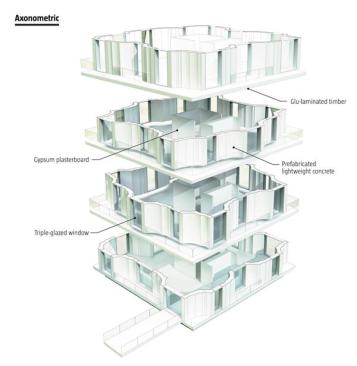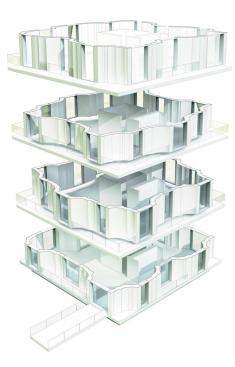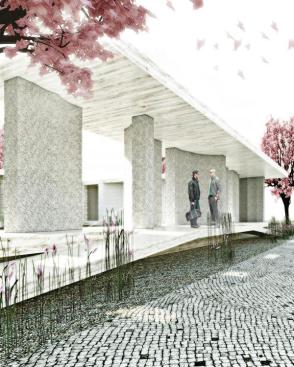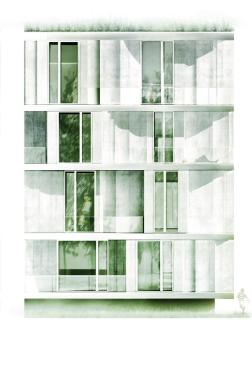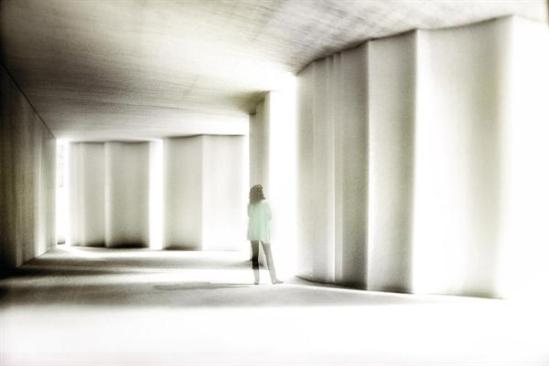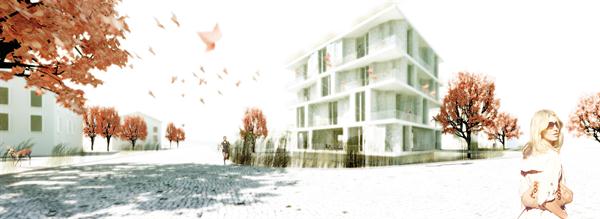Project Description
Affordable Housing
Barkow Leibinger
Site Wilhelmsburg, a lower-income community outside Hamburg, Germany, in a new master plan that includes housing and parks.
Program Six flexible, affordable housing units in a four-story building—units range in size from a 968-square-foot loft to a 1,830-square-foot live/work unit.
Solution This multifamily housing project was selected for construction after winning a locally sponsored international building exhibition. Seeking to combine performance with space-shaping potential, the designers selected prefabricated, lightweight concrete walls and glue-laminated fir decking as a starting point, and then set out to explore the system’s formal and spatial possibilities. The solid wall panels, with their gentle concave curves, are multitasking elements—they function as structural supports, perimeter walls, and thermal insulation, so the bearing structure remains exposed both inside and out. They can be used in single- and multi-story structures: In the latter, the concrete wall elements can overlap and stagger as they stack on each other, creating a structural frame as well as generating a highly articulated exterior and a variety of room configurations.
“It is intriguing research,” Steven Ehrlich said, noting his satisfaction at seeing a research-driven project produce interesting, formal results, though he did have reservations about the “strange juxtapositions between the wall sections and these plates on which they’re sitting. I admire how the different qualities of outdoor spaces are dancing on the façade, but I feel that this very strong form on the interior is going to be incredibly complex and problematic to live with.” But juror Joan Soranno felt differently: “That’s actually part of the appeal for me—the juxtaposition of these very horizontal thin plates with this series of concave, precast units. What drove me to this project is the juxtaposition of those two elements in a really simple way, and how the precast elements interact with light.”
